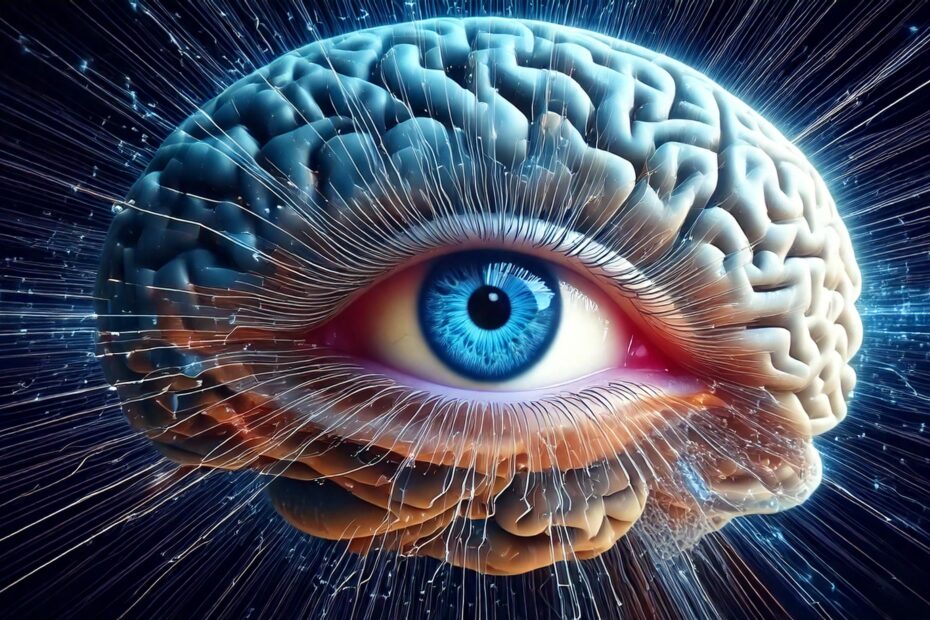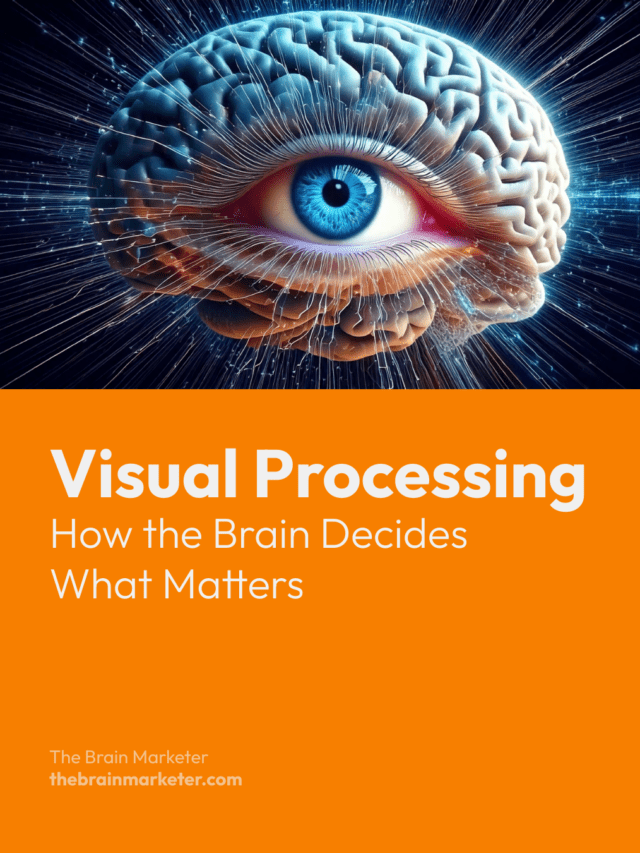Introduction
Visual information processing in marketing explains how our brains prioritize certain types of stimuli over others. From recognizing objects to detecting faces and animated elements, the brain follows a logical sequence to make sense of the visual world around us. Understanding visual information processing in marketing is crucial for marketers and advertisers, as it reveals what captures consumer attention most effectively. In this article, we will explore how the brain processes visual information and how this affects consumer behavior.
🎙️ Unpack the Topic with this Podcast
The Order of Visual Information Processing
When our brain receives visual input, it processes the information in a specific order. This order is driven by survival instincts and evolutionary programming, ensuring that we focus on elements that may be essential for our survival first.
1. Objects
The brain’s first priority is recognizing objects. Whether it’s a product on a store shelf or a familiar shape in the environment, our brain rapidly identifies and categorizes objects to understand the context of the situation.
- Example: When consumers enter a supermarket, their brain first identifies objects such as food packages, shelves, and promotional displays. These objects are quickly categorized based on previous knowledge and experiences.
2. Faces
Faces are particularly important for the brain. Humans are hardwired to recognize and respond to faces due to their importance in social interactions and communication. As a result, faces grab our attention more than other visual stimuli.
- Example: Advertisements featuring human faces are more likely to engage consumers and evoke emotional responses. Whether it’s a smiling model in a fashion ad or a relatable character in a commercial, faces help establish a connection with the viewer.
3. Animated or Inanimate Objects
Next, the brain processes whether the object is animated (moving) or inanimate (still). This distinction helps determine if the object poses a potential threat or is simply part of the environment. The brain uses this information to decide whether further action is necessary.
- Example: In marketing, animated visuals such as moving logos, dynamic ads, or videos capture more attention than static images because they engage the brain’s motion-detection system. This is why video content and motion graphics are so effective in grabbing and holding attention.
The Role of the Amygdala in Threat Detection
The amygdala, a small, almond-shaped structure in the brain, plays a key role in processing emotions and detecting potential threats. Once visual information is processed and categorized, the amygdala assesses the situation for any signs of danger. If a threat is detected, the amygdala sends signals to various parts of the body (heart, lungs, etc.) to prepare for a fight-or-flight response.
- Example: Imagine walking down a dark alley and spotting a shadowy figure moving toward you. The brain first processes the object (the figure), then identifies whether it’s animated (moving) and evaluates the threat. The amygdala then activates your body’s stress response, preparing you to either confront the threat or flee.
In marketing, the amygdala’s response can be triggered in more subtle ways. Advertisers often use fear-based marketing to activate the amygdala, whether it’s through health-related warnings or limited-time offers that create a sense of urgency.
How Marketers Can Use Visual Information Processing
Understanding how the brain processes visual information can help marketers design campaigns that align with the brain’s natural priorities.
1. Use of Objects in Ads
The first step in grabbing attention is to present a clear object that is easy for the brain to recognize. This object should be prominent in the design and relevant to the consumer’s needs.
- Strategy: In product ads, ensure that the product itself is clearly visible and stands out. Avoid clutter that may confuse the viewer’s brain during the initial stages of visual processing.
2. Faces for Emotional Engagement
Because the brain prioritizes faces, using human imagery in marketing can evoke an emotional response and create a sense of connection with the consumer.
- Strategy: Incorporate relatable, authentic human expressions in advertisements. Faces that show emotions such as happiness, trust, or excitement can enhance brand perception and increase consumer engagement.
3. Movement for Attention
Since the brain is wired to notice motion, adding animated elements or videos to marketing campaigns can draw attention more effectively than static visuals.
- Strategy: Use motion graphics, animated logos, or short videos to capture attention in digital advertising. Movement helps break through the clutter and engages the brain’s motion-detection system, making your message more memorable.
4. Fear and Urgency for the Amygdala
While the amygdala is primarily associated with threat detection, marketers can subtly trigger the amygdala through strategies that create a sense of urgency or fear of missing out (FOMO). Limited-time offers, countdown timers, and scarcity messaging are effective ways to engage the amygdala.
- Strategy: Use phrases like “Only 3 left in stock!” or “Sale ends in 24 hours!” to create a sense of urgency. These techniques activate the brain’s survival instincts, pushing consumers to take action.
Conclusion
Understanding how the brain processes visual information is essential for creating effective marketing strategies. By designing campaigns that align with the brain’s natural priorities—objects, faces, and movement—marketers can capture consumer attention more effectively. Additionally, leveraging the amygdala’s role in threat detection through urgency and scarcity can drive action.

Vincent Heimann is a marketing project manager and neuromarketing enthusiast. He founded The Brain Marketer to bridge neuroscience and marketing through accessible, science-based content. With over 10 years of experience in digital strategy, UX/UI and communication, he shares practical insights to help brands connect with the human brain — ethically and effectively

